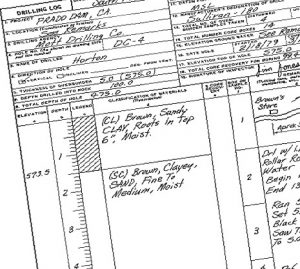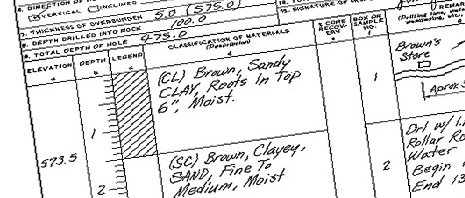
The foundation is one of the most critical components of any structure. Poor foundation design and construction can impair the serviceability of the entire structure and put adjacent structures at risk for movement and damage. The concepts, design parameters and construction considerations for a structure’s foundation system are based on a geotechnical subsurface investigation and memorialized in the geotechnical report.
On a lot of projects, geotechnical services are treated like a commodity. To be cost-competitive, some firms budget very little project-specific engineering and instead provide minimal interpretation of the subsurface conditions, excessively conservative design parameters and generic recommendations.
Thoughtful, project-specific foundation design parameters and recommendations, that are well coordinated with the site’s constraints, subsurface conditions, superstructure demands and likely construction methods, can help contain construction cost and manage risk. If your geotechnical report does not provide this, perhaps a second opinion is warranted.
A peer review of a geotechnical report can provide a second opinion for the foundation concept, design parameters and construction considerations. The focus and scope of the peer review and resulting findings and recommendations can be tailored to meet the needs of various parties on the project. The design team or owner can obtain a peer review if there are doubts about the original geotechnical report or if design challenges require an alternative perspective. General contractors and specialty contractors can use a peer review to identify value engineering opportunities or develop concepts for delegated designs. In some cases, other interests to a project have used peer reviews to provide oversight or support decision-making.
A few common scenarios in which peer reviewing a geotechnical report can be advantageous are:
- Urban Sites: Below grade construction in an urban environment necessitates a different approach to foundation construction. In addition, management of construction risk to adjacent structures is critical. These requirements need to be reflected in the recommendations for foundation design and construction.
- Deep Foundations and Ground Improvement: Some times deep foundations or ground improvement methods are recommended out of conservatism. These systems can significantly increase construction costs and can also increase risks in some circumstances.
- Deep Excavations: Most geotechnical reports do not include complete recommendations and design parameters for deep excavations because of the variety of construction and design methods available and the iterative nature of the design process. Nevertheless, the mean and methods for the excavation need to be considered during design to manage cost and risk.
- Specialty Foundations: Some foundation systems, like slurry walls, secant pile walls, micropiles and ground improvement methods are outside the expertise of many engineers and need specific geotechnical inputs during the design process.
If there are opportunities to substantively improve upon the investigation and recommendations in the geotechnical report, these items should be identified as part of the peer review. A different foundations system might be more appropriate for the project. Supplemental explorations, laboratory testing and engineering analysis might provide opportunities to reduced construction cost or project risk. There may be construction considerations that need to be brought to the attention of the design team.
A peer review of the geotechnical report is not a cure-all, but it can be used to identify opportunities to improve below-grade aspects of the project and may represent the first step towards optimizing below ground systems. This can be an important method of improving performance, reducing construction costs and managing risk.
